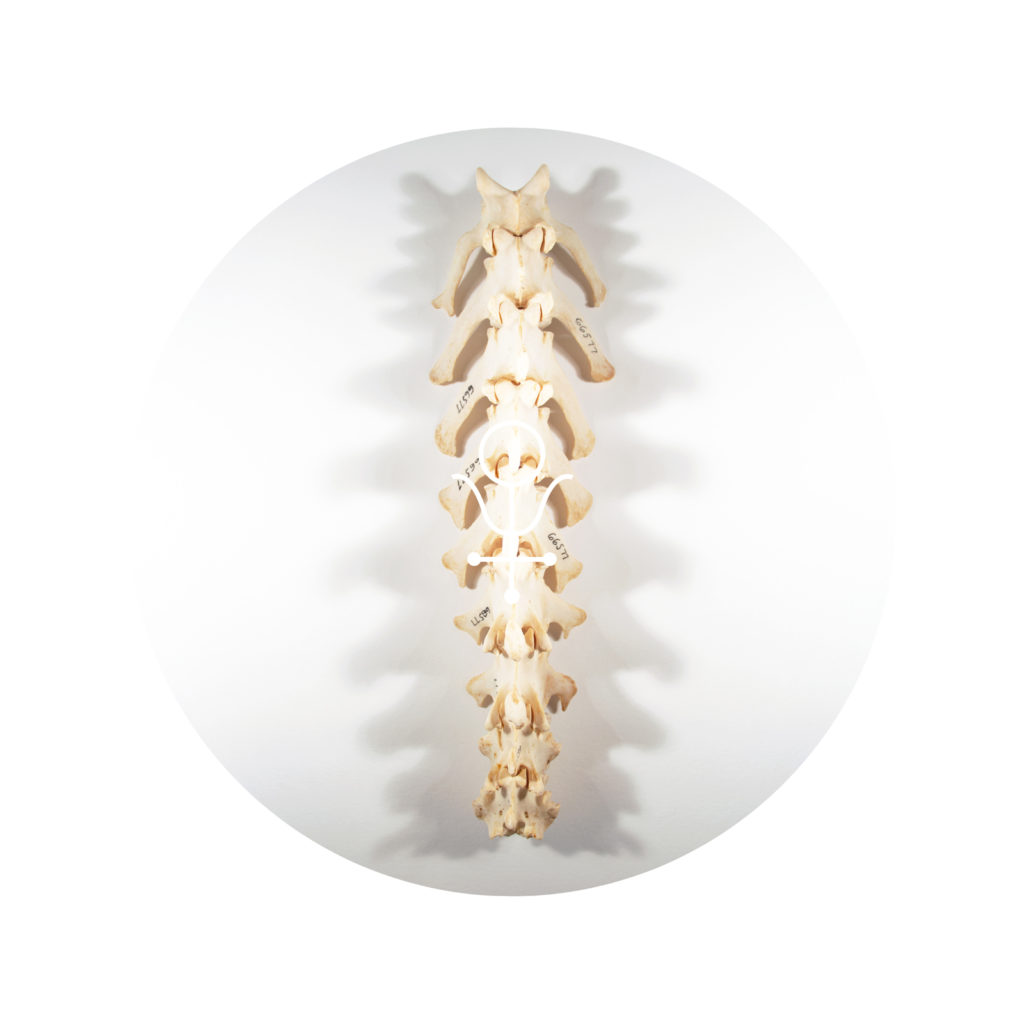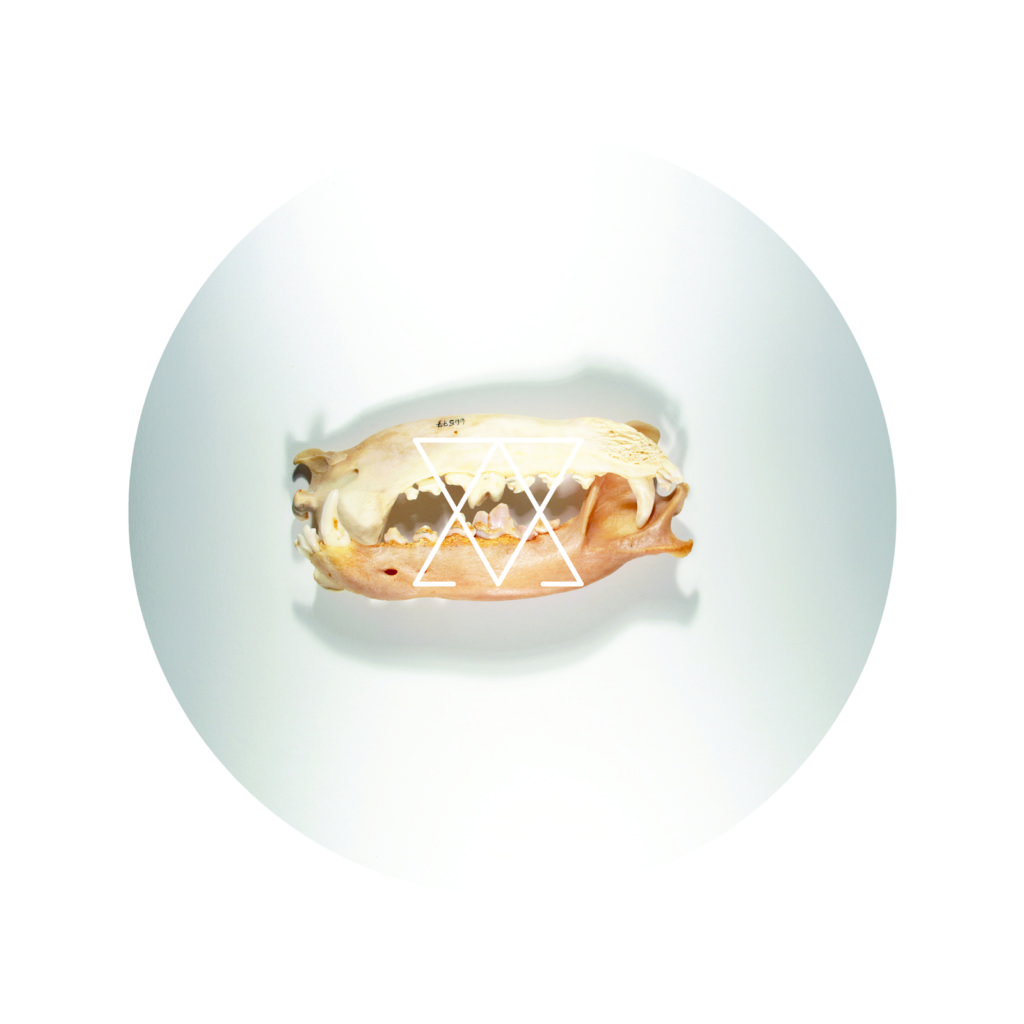El Lobo,
Mexican Gray Wolf
Canis lupus baileyi
—Feral

Nina’s Story (Installation View), Viola Arduini
Nina's Story
A story about one feral body, Nina’s.
A story in five alchemical elements.

I. Antimony, the wolf and the animal nature of man.
Feral is the aftermath of a lost domestication.
An opposite movement:
Wild to tame / domesticated to wild, again.
Mexican Gray wolves navigate both directions. Nina’s story is their story.
Nina.
As only wolves can be, feral force and feral care.
The relationship between wolves is powerful and desperate.
(Rome was founded by la lupa, a she-wolf that saved its first king as an infant.
Care is not a human invention.)
Nina was a wild wolf forced into domestication.
Addomesticare, ad domus. Where is home then?
Nina. Untamed as a wolf could be in a world of humans that want her destruction.
A form of freedom limited by hate.
Wolf and antimony as the animal nature of man.
Is ferality a human construct after all, I wonder?
Nina’s story is a story of extinction.

II. Arsenic, death, two half jaws eating each other.
In alchemy, arsenic represents transformation and death.
Arsenic as a process of lethal change happened to the Mexican Gray Wolves
and the land of the American Southwest.
When settlers moved there with their imported herds of livestock,
they changed the lines of
canyons and rivers and grasslands and forests.
They hunted to almostextinction the wolves.
No more howling. A silenced land. A colonial story:
an erasure for domination.
(“There is nowhere for you to hide, the hunter’s moon is shining.”)
There are many stories of apocalypses and survivals, bottlenecks of uncertain futures.
For the Mexican wolves it was made of five wolves.
Five wolves as the fingers of a human hand. What has been done needs to be undone.
Deescalate erasures.
An intent: to restart from captivity a population of Mexican Gray wolves,
almost all lost in the wild.
Save what you can in the arc, my modern Noah.
When the apocalypse comes, what stories do you want to save?
Or better, what stories can you save?
Nina was one of those five wolves to start a breeding program.


III. Silver, the Moon, the female intuition.
Nina’s story is a story of many stories.
Of generation, of loss, of exploitation.
Motherhood and death.
Nina was pregnant when captured. The only daughter didn’t live.
Nina for a long time was the only female wolf of the program.
Nina, the Eve of her species.
Nina and her DNA, both necessity and possibility.
[Did you dream of men and cages before then? Did the moon tell you about all of this?]
Maybe she refused what all those heavy gazes around were asking for.
If I can’t teach them about the desert. There is a fence at the end of the horizon.
Ferality and fertility coexist in the flesh.

IV. Copper, Venus, fertility, creativity
Two years; Nina didn’t have pups for the humans.
Apocalypse and genesis sometimes live in the same body for a long time.
Eventually, two daughters shared the duty of continuing the species.
(One of them was Cecilia. These are her bones.)
The hundreds of Mexican Gray Wolves alive today have five ancestors.
What kind of ancestry is the one you can count
on a human hand?
From the myth of Eve, only a partial generation comes.
There is no richness of bodies, there is no richness of genes.

V. Water, the womb
Nina and her great great- great- grandchildren.
What of her ferality did she have to give up, for them to run again?
(Yet, the canyons are different now.)
Wild, selvaggio. From silva, la selva, of the woods.
Wild bodies belong to the forest.
Nina’s story, and the one of the Mexican Gray Wolves, is a story of coming home.
Her womb was home away from home.
Her body was domestic and wild, at once.
Nina’s story is a story of a single body that connects to many others.
Coming home. The forest and the domus of man.
(The mother and the desert.)
Viola Arduini
Independent Artist
—Albuquerque, New Mexico, USA
Special thank you to the Museum of Southwestern Biology for allowing me to photograph their specimen collection. And to David Parsons, MS, carnivore biologist and the first human being to see and hear the Mexican Gray wolves free again in the wild, for sharing stories and documents for my research.
